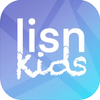How Listening to Stories Can Help a Dyslexic Child Improve Reading Comprehension
When silent reading becomes a silent struggle
If you're parenting a child with dyslexia, you've probably seen the silent battles—your child staring at a page much longer than expected, reading a sentence over and over, or feeling defeated before even picking up a book. It’s heartbreaking to watch, especially when you know the challenge has little to do with their intelligence or curiosity and everything to do with how their brain processes written language.
One area that often becomes a sticking point is reading comprehension. As decoding words takes up more cognitive bandwidth for dyslexic children, there’s less mental space left to understand and enjoy the story itself. But here’s something you might not have considered: listening to stories could be a powerful route to helping your child overcome this barrier, rebuild confidence, and reconnect with the pleasure of narrative.
Understanding the unique reading experience of dyslexic kids
For children with dyslexia, reading isn’t just slower—it can feel exhausting, even painful. The process of sounding out words and trying to grasp sentence structure often leaves little energy for inferring meaning or making connections in the text. This makes reading comprehension feel almost out of reach.
In fact, if you haven’t already, you might want to take a look at how dyslexic children experience homework at home. It's a window into the emotional toll of daily school struggles—and one that explains why many kids avoid reading altogether when they’re not required to do it.
But here’s the hopeful part: listening bypasses many of the decoding difficulties associated with reading, giving children the ability to focus entirely on meaning. This isn’t just a workaround—it’s a way to strengthen comprehension itself, in a format that actually feels pleasurable.
How listening helps build comprehension skills
When your child listens to a well-told story, different skills are activated. They’re practicing:
- Vocabulary development: Hearing new words in context helps children learn their meanings and usage naturally.
- Sequencing and story structure: Following a narrative from beginning to end teaches plot, causality, and theme recognition.
- Inference and prediction: Without the strain of decoding, your child can imagine what might happen next and understand character motives more clearly.
Audio stories also promote auditory memory, which supports reading comprehension by reinforcing the ability to hold and manipulate information in the mind. Over time, these skills can transfer to their reading practice, allowing them to connect more with the text, even if decoding is still a challenge.
Creating story time that supports your child emotionally and cognitively
Many children with dyslexia carry a lot of stress related to school and language learning. That stress can act like static in the brain—making it near-impossible to relax enough to process new information. Intentionally weaving calming story time into your daily rhythm can offer both emotional relief and developmental benefit.
You’re not alone in wanting to create calm evenings and imaginative activities for your child. Choosing a cozy story, dimming the lights, or simply sharing a pair of headphones with your child can make listening to stories feel like a safe, comforting ritual rather than another educational task.
Kids often love to revisit the same stories multiple times—and with audio format, there's no stigma attached to repetition. Every listen reinforces understanding, vocabulary, and memory in a very natural way.
Choosing the right content for maximum impact
As with anything, the stories you choose to share matter. You want content that's engaging, age-appropriate, and beautifully written—preferably with strong narration. This is where audio platforms specifically designed for children can offer peace of mind.
One example is the iOS or Android app LISN Kids, which offers original audiobooks and audio series designed for children ages 3 to 12. Not only does it include a diverse library of imaginative content, but it also offers a screen-free alternative for late afternoons or bedtime, perfect for dyslexic children who want to enjoy stories at their own pace.

From passive listening to active engagement
Of course, just playing an audiobook isn't a magic fix. But it can be a doorway. Try gently engaging your child in conversation after the story:
- “What do you think will happen next if the story continued?”
- “Which character would you want to be friends with?”
- “Why do you think the wolf wanted to trick the other animals?”
These aren’t quizzes—they’re invitations. Your child gets to show what they understood and build confidence around their ability to interpret narrative, even if reading itself still feels hard.
If bedtime is a source of stress or anxiety, turning it into story-based ritual can also be transformative. You might enjoy exploring how bedtime storytelling can support dyslexic children in developing a more peaceful relationship with language and evening transitions.
Final thoughts: Start with connection, not correction
When you're raising a child who struggles with reading, it's tempting to focus on correcting what's "wrong." But often, the best support we can offer isn’t technical—it’s emotional and imaginative. By offering stories in a format that relaxes your child’s nervous system and builds comprehension naturally, you're helping them connect with language in a way that feels good.
Listening isn’t a shortcut or a consolation prize—it’s a real literacy tool, rooted in the oldest human tradition of storytelling. And for many dyslexic children, it's exactly where their reading journey needs to begin.
For resources to help your child navigate the deeper emotional layers of school-related stress, this piece on supporting a dyslexic child’s emotions about school is worth a read.
